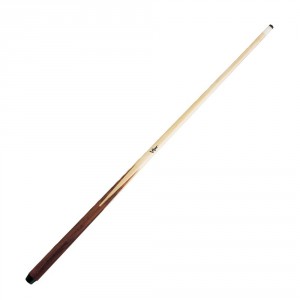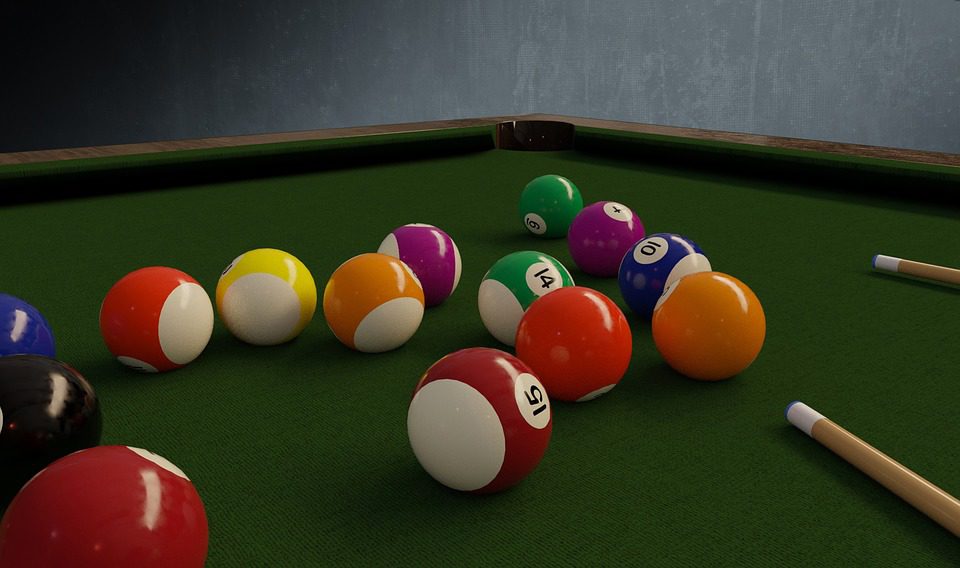Other than being used to hitting a cue ball to hit other balls on a billiards table, have  you ever wondered what the origin of the cue stick and what it’s made of? Well, I am here to discuss about that on this post and where you can get one that’s worth using.
you ever wondered what the origin of the cue stick and what it’s made of? Well, I am here to discuss about that on this post and where you can get one that’s worth using.
You have probably seen my post where I talked about the history of billiards. I have mentioned that at one point that instead of using cue sticks. People used their hands to move the balls. You can read about it by clicking here.
Before cue sticks were used…
As stated earlier, before the modern-day billiards sticks were used to hit the cue balls to hit other billiards balls on the table, people used their hands to shove the ball. It wasn’t until the mid 17th century where a “mace” was being used in the game of carom billiards to shove the billiards balls, particularly the cue ball.
As pictured above, the mace resembled a light-weight golf club where the tip end of the stick would be used to reach the hard-to-reach balls on the table. This is especially used for the balls that are leaning against the rail cushion. It wasn’t until 1800 where the modern cue stick was used. And, this use of the cue stick had no longer been an objective for shoving. Instead, it was used to strike other balls as it’s commonly used today.
Where to get a high quality billiards stick
I found this billiards stick that you see on the picture below on Amazon by a company called Viper. It has a rating of  4.6/5 stars which I feel is good enough to be on my “to recommend” list.
4.6/5 stars which I feel is good enough to be on my “to recommend” list.
Here are what to expect on what this stick is made of:
- Constructed from quality hard Canadian Maple wood; Coated with 9 layers of varnish
- Reliable and dependable these billiard cues are intended for high volume use
- Each billiard cue is finished off with a 13mm Le Pro leather tip and an ABS bumper
- Available in 18-21 ounce cue weights, offering a customizable assortment
There are six different sizes and weights to choose from. I highly recommend the 57-inch (18 ounce) as it is the most commonly used cue stick from billiards players including myself. It has the longest reach and the lightest weight of all the rest. But, to each their own. You can select which one suits you best, and I hope that when you do, that you are satisfied with your decision.
Warp Prevention
This billiards cue stick is coated with nine layers of varnish so it is made to be used with a high volume. This warping prevention ensures reliability and durability. You can be assured that you can play and use the Viper Cue Stick for years and years without having to worry about replacing it for a long time.
About Viper
Viper is owned by GLD Products where the company has been in operation for over thirty years. Outside of billiards GLD Products sells other family-oriented items such as darts, table games, and casino items (i.e. poker tables and accessories). The company listens to what their customers has to say and what to recommend so they can keep them happy and satisfied. You can rest assured that you are getting a product that’s from a trusted company.
Questions?
I have provided the best billiards stick possible that I can find on Amazon. It’s now your turn to sound off on this item. Please add any comments/feedback/questions in the comment section as I would like to hear about them.


Permalink //
Hello Armand I never knew that before billiards sticks were used, people used their hands to shove the ball and that it wasn’t until as late as 1800 that the cue stick became part of the game. Nor did I realize how many parts there were in a ‘simple’ billiard cue. Ha ha, all very interesting and a great read. Thank you for creating this interesting post.
Permalink //
Yw, Peter. The cue stick evolved from just using the hands to using a golf-club like item to move the balls around. Not only did the cue stick evolved, but the table did as well. At one point the game that we know today as billiards resembled the modern-day game of croquet where it was played on the ground. I will try and find some more interesting stories about billiards and any form of gaming in the future. Stay tuned.